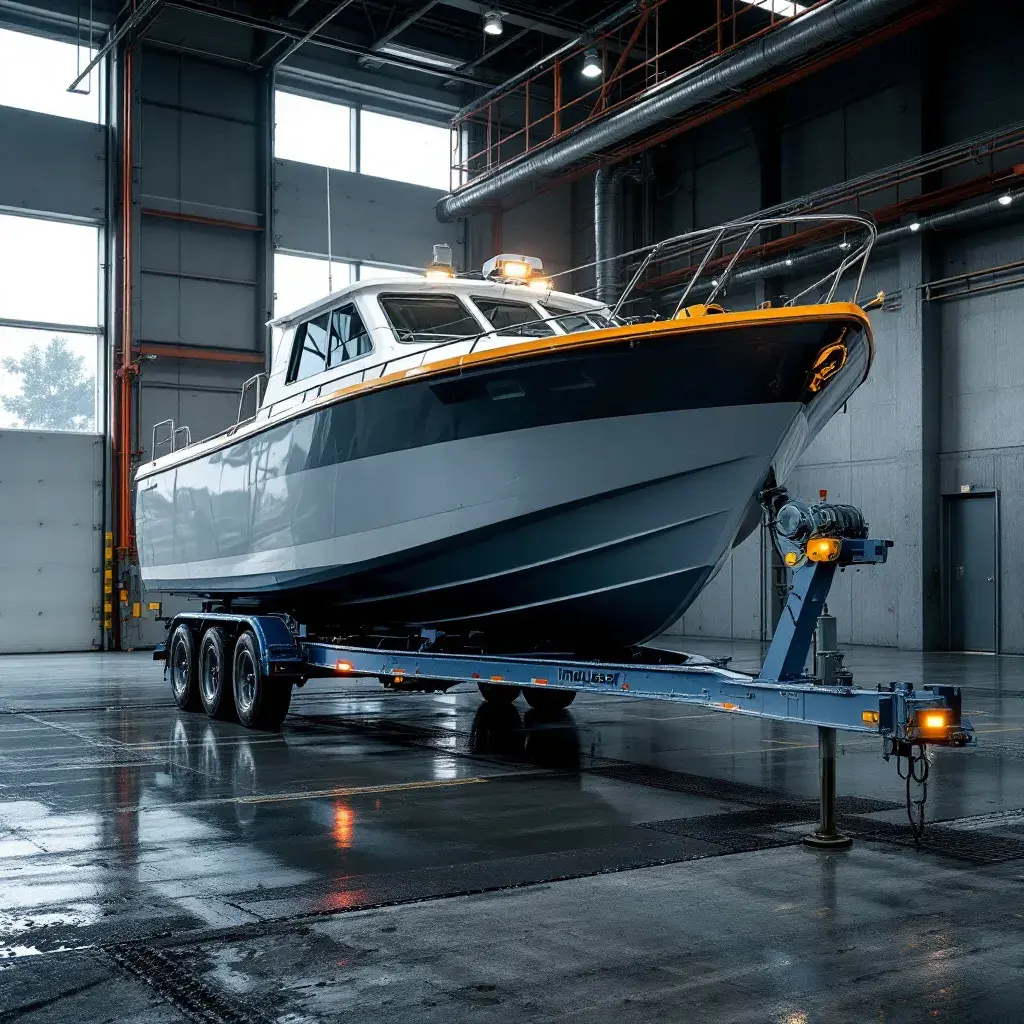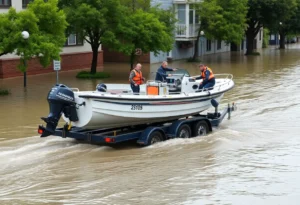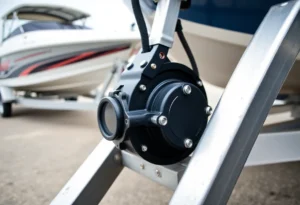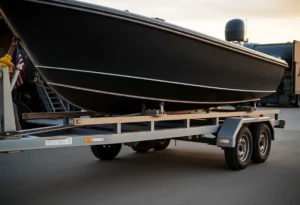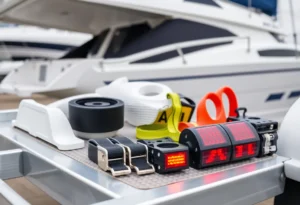Rescue boat trailers are essential for supporting boats that face unpredictable and demanding environments. For those in the rescue and emergency sectors, having a trailer that’s rugged and capable of handling heavy-duty use is crucial. A well-prepared trailer ensures not only the safety of your boat but also quick, reliable deployments when time is critical. Here, we’ll explore various techniques for reinforcing your rescue boat trailer to make it more durable, reliable, and ready for the most rigorous conditions.
1. Reinforce the Frame with Structural Enhancements
The frame is the backbone of any trailer, and enhancing its strength is a significant step in preparing your rescue boat trailer for heavy-duty demands. Start by examining your frame for any areas where additional structural supports can be added. This may involve adding crossbars or braces to distribute the load more evenly and reduce strain on any single section.
Techniques to Consider:
- Add Crossbars: Position additional crossbars across the frame for greater load distribution.
- Strengthen with Bolted Joints: Bolted connections provide the needed flexibility and durability for frames that will encounter vibration, shock, and heavy loads.
These reinforcements add strength to the frame without adding excessive weight, helping the trailer maintain its structural integrity.
2. Upgrade the Suspension System
A well-maintained suspension system ensures a smoother ride and reduces stress on both the trailer and its load. For heavy-duty rescue operations, the suspension system must be robust enough to handle uneven terrains and weight fluctuations.
Steps for Improving Suspension:
- Consider Heavy-Duty Springs: Leaf springs or torsion axles designed for high loads can significantly improve the trailer’s load-bearing capabilities.
- Install Shock Absorbers: Shock absorbers are excellent additions for rescue boat trailers, as they minimize the jolting and bouncing that can lead to frame wear over time.
This system upgrade can help extend the lifespan of the trailer and safeguard the equipment during transportation.
3. Strengthen Key Components with Reinforced Bolting
With continuous loading and unloading, high-impact areas like axle mounts and coupling points can experience increased strain. Reinforcing these parts with quality, high-grade bolts and ensuring they are properly torqued can prevent loosening over time and keep the trailer stable under heavy-duty use.
Techniques for Securing Bolting Points:
- Use Grade 8 or Higher Bolts: Higher-grade bolts are resistant to stretching and breaking under pressure.
- Apply Thread Locking Compound: For high-vibration applications, consider using thread locking compound on bolts to prevent loosening.
Keeping these components secure minimizes the risk of parts loosening or failing, which is crucial for trailers that are frequently exposed to rough conditions.
4. Enhance Rust and Corrosion Resistance
Rescue boats often operate in harsh environments, including saltwater, which can lead to corrosion on the trailer over time. Enhancing rust and corrosion resistance is essential for extending the lifespan of your trailer.
Protective Measures to Consider:
- Apply High-Quality Protective Coatings: Choose coatings designed to resist the elements, especially ones formulated to withstand saltwater exposure.
- Regular Maintenance Routine: Rinse the trailer after each use, especially in saltwater environments, to remove any corrosive residue. Apply anti-corrosion spray regularly as an additional protective layer.
Rust protection helps prevent weakening of the structure and components, which is especially important for rescue trailers that may face prolonged exposure to challenging environments.
5. Upgrade Wheels and Tires for Heavy Loads
The wheels and tires on your trailer are another essential component to reinforce. With heavy-duty use, your trailer needs tires that can support the weight and navigate various terrains.
Suggestions for Wheel and Tire Upgrades:
- Use Load-Rated Tires: Choose tires specifically rated for heavy loads and the speeds you’ll likely be traveling.
- Upgrade to Alloy Wheels: Alloy wheels provide increased strength and durability without the added weight, which can reduce strain on the frame and axles.
Keeping your tires in optimal condition also enhances handling, providing stability and control during high-stress situations.
6. Reinforce the Coupling and Tongue Area
The tongue and coupling of your trailer endure significant strain, particularly during towing and maneuvering. Reinforcing these areas can reduce the likelihood of failures, especially during high-impact or emergency scenarios.
How to Strengthen the Coupling and Tongue:
- Install a Heavy-Duty Coupler: Consider upgrading to a coupler rated for high loads.
- Check Tongue Weight Capacity: Ensure that the tongue is rated for the total weight of your trailer and its load. Reinforce this area as needed to manage the strain of heavy use.
These precautions can improve safety and reliability, giving you peace of mind during critical rescues.
Final Thoughts
By reinforcing your rescue boat trailer, you ensure it’s ready to withstand the most demanding conditions, keeping your boat safe and functional when it’s needed most. Through structural enhancements, suspension upgrades, corrosion protection, and attention to component durability, your trailer will be prepared for heavy-duty use, giving you the resilience and dependability required in high-stakes environments. Regular inspections and maintenance will ensure these reinforcements continue to protect your trailer for years to come.

